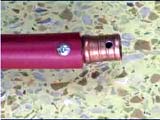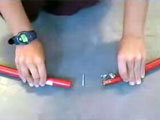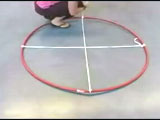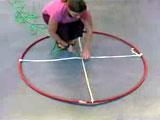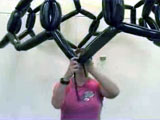
Balloon Nanotube Construction
Procedure created by Dana Horoszewski, Ryan Nygard, Kelly Luster, Jai Paguirigan, Erin Hood and Heidi Williamson.
This tutorial describes how to build and display a 10-30 foot tall balloon model of a carbon nanotube.
Step 1: Constructing the frame
1. Dura PEX tubing usually comes in 25 ft spools. Cut the tubing into two 12.5 ft pieces; this will be enough for two 4-foot diameter frames. Insert the 1/2" male/male joint into one end of the tubing and drill a hole through both pieces with a power drill about 0.5" from the end of the tube. Insert the other end of the joint into the opposite end of the tube and repeat. 2. Secure the hoop for the frame with screws and wing nuts. Insert a screw into the hole you just drilled to attach the joint to one end of the tubing. Fasten in place with a wing nut.3. Attach the other end of the tubing to the joint with the second screw and wing nut.
4. Mark out quadrants on the circle using tape or pen. Put a mark directly across from the joint, then put marks halfway between that mark and the joint on each side.
(Alternatively, a hula hoop can be purchased at a local toy store for use as the frame. Balloon Nanotubes made with a hula hoop will have a smaller diameter than the ones featured in this guide.)
Step 2: Preparing the frame for hanging
1. Take a segment of medium rope about 10 ft long. Fold it in half and tie it across the circle at two of the marked points opposite each other. Repeat for the other two marks with another length of rope.[Optional: the ropes can be duct taped where they meet the frame to prevent sliding during construction.]
Step 3: Hanging the frame
1. Tie one end of the climbing rope to the point where the medium ropes cross. A hangman's knot works well for this.a. You should consult your building manager about the best way to hang and tie off the sculpture. Note that the frame will have to be raised several times during construction and the final sculpture will weigh about 10 lb.
b. Initially, the frame should be suspended about shoulders' height from the floor.
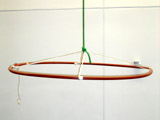
Step 4: Adding the first ring
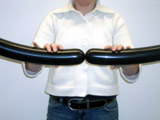
2. To start the first ring, pinch and twist a balloon at its midpoint, forming two links.
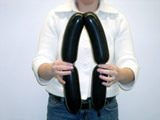
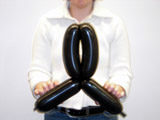
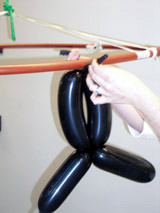
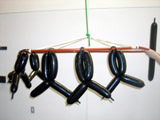
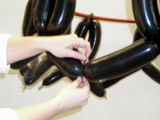
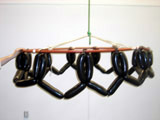
Step 5: Adding to the structure
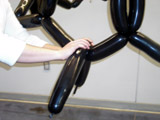
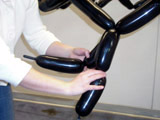
3. Repeat steps 1 and 2 on the next downward facing joint, so that two upside-down Y-shaped balloons are hanging next to each other.
4. Knot adjacent ends of the Y-shaped balloons together, forming a hexagon.
5. Repeat steps 1, 2 and 4 to complete the row. Continue repeating them to add more rows to the sculpture. Raise the structure periodically so that it’s at a comfortable working height. Add as many rows as you wish without letting the sculpture touch the floor. (Grit on the floor can cause balloons to pop).
Step 6: Finishing the structure
1. For the final row, follow steps 1 to 4 above, then stop.2. The bottom row may need some weight added to look like hexagons. Fill a balloon with a small amount of water and drape over two or three of the downward facing joints to add weight.
Step 7: Clean up
When you are ready to take down the sculpture, lower the frame to the floor. Cut the fishing line and take the sculpture outside to pop, as it can be noisy. To deflate a balloon with out popping, cut where the balloon is stretched at the ends. Be sure to clean up all the pieces of popped balloon!View our older procedure with an alternative method for building the first ring.
Materials|
|
| |
Exploring the Nanoworld | MRSEC Nanostructured Interfaces | ||

